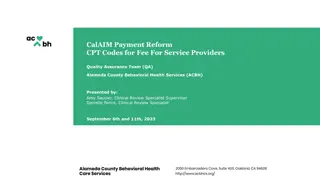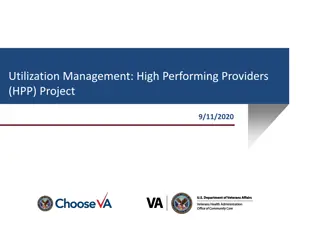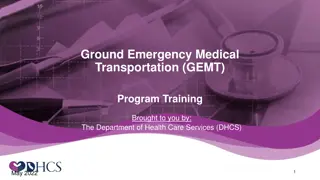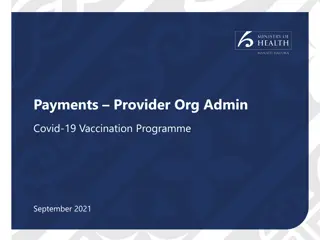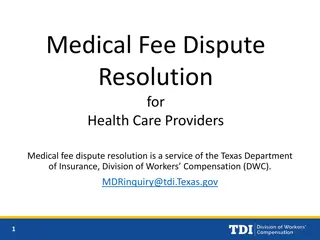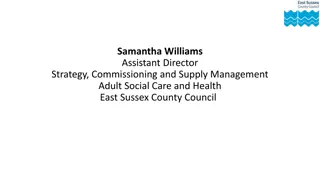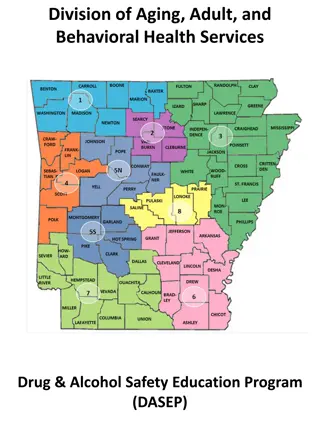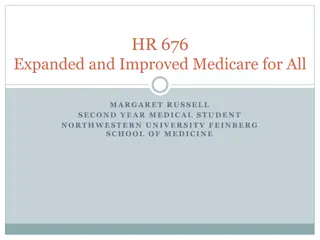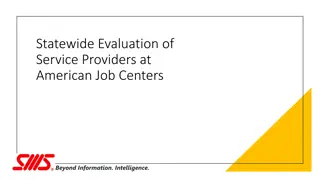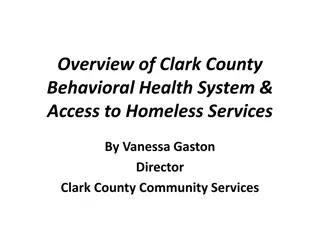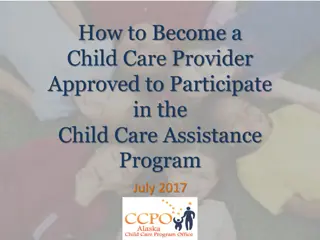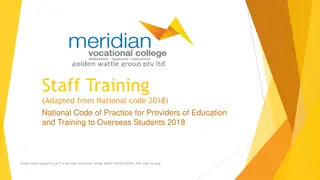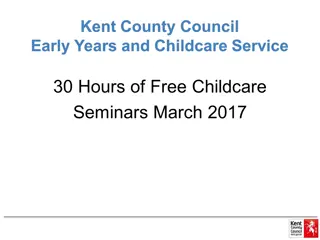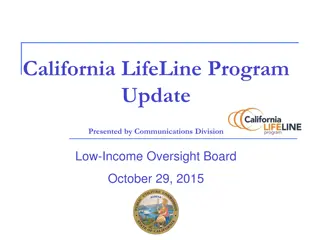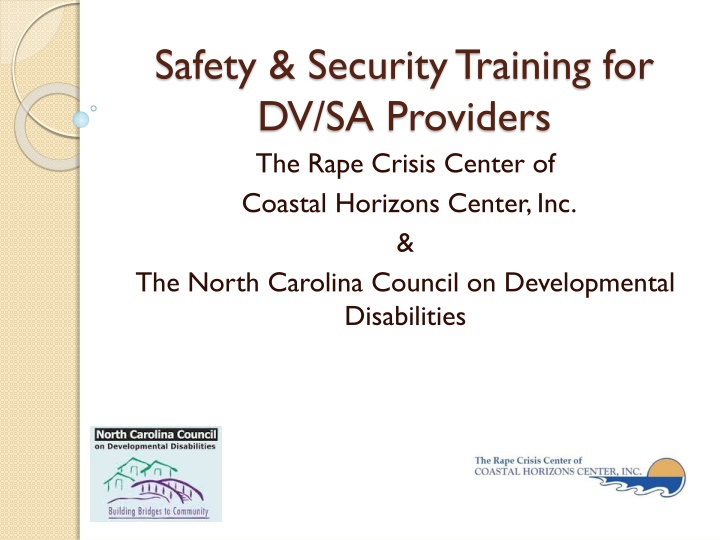
Developmental Disabilities and Their Impact on Individuals
Explore developmental disabilities affecting major life activities, such as learning and mobility. Learn about nervous system disorders and sensory impairments, and how they influence daily functioning and interaction. Discover key insights into supporting individuals with disabilities in various settings.
Download Presentation

Please find below an Image/Link to download the presentation.
The content on the website is provided AS IS for your information and personal use only. It may not be sold, licensed, or shared on other websites without obtaining consent from the author. If you encounter any issues during the download, it is possible that the publisher has removed the file from their server.
You are allowed to download the files provided on this website for personal or commercial use, subject to the condition that they are used lawfully. All files are the property of their respective owners.
The content on the website is provided AS IS for your information and personal use only. It may not be sold, licensed, or shared on other websites without obtaining consent from the author.
E N D
Presentation Transcript
Safety & Security Training for DV/SA Providers The Rape Crisis Center of Coastal Horizons Center, Inc. & The North Carolina Council on Developmental Disabilities
This training was produced by The Rape Crisis Center of Coastal Horizons Center, Inc. and funded by the North Carolina Council on Developmental Disabilities. The purpose of this production was to enhance disability providers capacity to serve survivors of sexual assault and domestic violence and for sexual assault and domestic violence service providers to enhance their services. for individuals with disabilities. The NCCDD own the rights to this production.
Did You Know? 56.7 million or 19% of Americans have a disability (US Census, 2010) Individuals with disabilities are the fastest growing minority group in the US
Developmental Disabilities Chronic disability that manifests before adulthood (age 21) and is likely to continue indefinitely. Results in substantial functional limitations in 3 or more of the following areas for major life activity: 1. Self-care 2. Receptive and expressive language 3. Learning 4. Mobility 5. Self-direction 6. Capacity for independent living and/or 7. Economic self-sufficiency
Nervous System These disorders affect how the brain, spinal cord, and nervous system function, which can affect intelligence and learning. These conditions can also cause other problems such as behavioral disorders, speech or language difficulties, seizures, and trouble with movement. Cerebral palsy,5 Down syndrome, Fragile X syndrome, and autism spectrum disorders (ASDs) are examples of IDDs related to problems with the nervous system. (NIH 2012)
Sensory System These disorders affect the senses (sight, hearing, touch, taste, and smell) or how the brain processes or interprets information from the senses. Preterm infants and infants exposed to infections, such as cytomegalovirus, may have problems with their eyesight and/or hearing. In addition, being touched or held can be difficult for people with ASDs. (NIH 2012)
Metabolism These disorders affect how the body uses food and other materials for energy and growth. For example, how the body breaks down food during digestion is a metabolic process. Problems with these processes can upset the balance of materials available for the body to function properly. Too much of one thing, or too little of another can cause problems with overall body and brain function. Phenylketonuria (PKU) and congenital hypothyroidism are examples of metabolic conditions that can lead to IDDs. (NIH 2012)
Degenerative Individuals with degenerative disorders may seem or be typical at birth and may develop typically for a time, but then they begin to lose skills, abilities, and functions because of the condition. In some cases, the problem may not be detected until the child is an adolescent or adult and starts to show signs of loss of function. Some degenerative disorders result from other conditions, such as untreated problems of metabolism. (NIH 2012) Ex Include Alzheimer's disease, Rett Syndrome, Pick's Disease
Intellectual/Cognitive Disability Formerly known as "MR" or "mentally retarded." (ouch!) The American Medical Association still uses "MR." IQ of 70 or below.
Traumatic Brain Injury (TBI) Can be caused by head injuries, overdoses, oxygen deprivation etc. Not technically a developmental disability but presents similarly. Can cause deficits in memory, inhibition, slow verbal or physical responses.
Inmates & TBI Due to PREA you may have more contact with incarcerated victims. 25%-87% of incarcerated people have a reported TBI compared to 8.5% of the general population. (CDC)
Intersection of TBI & DV Perpetrators seldom assault their partners only once, some victims suffer repeated head injuries. One study of women in three domestic violence shelters found that: 92% had been hit in the head by their partners, most more than once. 83% had been both hit in the head and severely shaken. 8% of them had been hit in the head over 20 times in the past year. The more times individuals had been hit in the head or shaken, the more severe, and the more frequent, were their symptoms. (http://opdv.state.ny.us/professionals/tbi/intersection.html)
(d)Deaf Population IPV in the (d)Deaf Community 54% of boys who are deaf have been sexually abused vs 10% of boys who are hearing. 50% of girls who are deaf have been sexually abused vs 25% of girls who are hearing. (Sullivan, Vernon & Scanlan, 1987) 50% of women in the deaf population will experience domestic violence vs 25% of hearing women. Deaf women are less likely to identify IPV as abuse (UMASS Medical School, 2014)
D vs d "We use the lowercase deaf when referring to the audiological condition of not hearing, and the uppercase Deaf when referring to a particular group of deaf people who share a language American Sign Language (ASL) and a culture. The members of this group have inherited their sign language, use it as a primary means of communication among themselves, and hold a set of beliefs about themselves and their connection to the larger society. We distinguish them from, for example, those who find themselves losing their hearing because of illness, trauma or age; although these people share the condition of not hearing, they do not have access to the knowledge, beliefs, and practices that make up the culture of Deaf people." (http://nad.org/issues/american-sign-language/community-and-culture-faq)
Hard of Hearing (HOH) Hard-of-hearing can denote a person with a mild-to-moderate hearing loss. Or it can denote a deaf person who doesn t have/want any cultural affiliation with the Deaf community. Or both. The HOH dilemma: in some ways hearing, in some ways deaf, in others, neither. Can one be hard-of-hearing and ASL-Deaf? That s possible, too. Can one be hard-of-hearing and function as hearing? Of course. What about being hard-of-hearing and functioning as a member of both the hearing and Deaf communities? That s a delicate tightrope-balancing act, but it too is possible. As for the political dimension: HOH people can be allies of the Deaf community. They can choose to join or to ignore it. They can participate in the social, cultural, political, and legal life of the community along with culturally-Deaf or live their lives completely within the parameters of the Hearing world. But they may have a more difficult time establishing a satisfying cultural/social identity." (http://nad.org/issues/american-sign-language/community-and-culture-faq)
Keep in mind... All victims/survivors face difficulty when attempting to leave a violent person, situation or environment but individuals with disabilities face even more barriers when seeking services and increased risks for their safety. AND! DV/SA services to survivors with disabilities is not an extension of our work, it is our work. (CALCASA 2010)
Unfortunately... In North Carolina, a person with a disability is 5 times more likely to be sexually assaulted than someone without a disability (National Center of Victims of Crime). 90% of people with developmental disabilities will be physically or sexually abused. (Reynolds, 2011) Half of people with developmental disabilities who are abused will experience 10 or more abusive incidents (WCASA) Abusers will typically abuse as many as 70 people before getting caught (Valenti-Hein & Schwarts, 1995) 3% of sexual abuse cases involving people with disabilities were ever reported to law enforcement (Valenti-Hein & Schwarts, 1995)
Unfortunately People with disabilities experience abuse by a greater number of perpetrators (Baladerian 1991) & stay in dangerous conditions significantly longer 11.3 years vs 7.1 years in situations of physical abuse 8.3 years vs 4.1 years in situations of sexual abuse (Baylor University)
It is important to remember that it is not the disability itself that increases the risk of victimization, but the societal & situational factors.
Myths about People with Disabilities Myths like... People with disabilities are: Not sexual beings/overly sexual. Do not have intimate/romantic relationships. Are unable to consent to sex. Cannot communicate thoughts or feelings. Are unaffected by trauma Must have people make decisions for them in all areas of their lives
Society often depicts people with disabilities as being a source of pity or inspiration (Shapiro, 1993) I can't help but wonder whether the source of this strange assumption that living our lives takes some particular kind of courage in the news media, an incredibly powerful tool in shaping the way we think about disability. Most journalists seem utterly incapable of writing or talking about a person with a disability without using phrases like overcoming disability , brave , suffers from , defying the odds , wheelchair bound , or my personal favorite, inspirational ." - Stella Young
The Media Why do actors with out disabilities play people with disabilities?
Risk Factors Too frequently considered physically weak, emotionally unstable and/or intellectually incompetent, persons with disabilities may be viewed by perpetrators as easy targets for victimization. Perpetrators may trust that first responders won t believe these victims or know how to help them. Individuals with disabilities are taught values & beliefs that affect behavior and social etiquette making them more likely victims. Obey the rules & those in charge Don't be assertive or get angry Agree with adults or authority figures Honor other people's opinions Taught to be obedient & dependent Reluctance to express negative feelings or desire for change Personal choices may not be possible Refusal is not usually accepted
Risk Factors Social isolation Lack of accessible transportation Reliance on others for care & the use of multiple caregivers increases opportunities for abuse Communication barriers Lack of knowledge about healthy intimate relationships Lack of resources/lack of knowledge of existing resources. Poverty Lack of control of their personal affairs Perceived lack of credibility when they disclose sexual victimization Lack of support from caregiver Lack of privacy
People with disabilities often receive little or no sex education. Not educated in sex for fear it will "make" the individual sexually active. Denied a sense of sexuality- not viewed as a sexual being Believe, "what the don't know won't hurt them." PCAR
ADA Compliance The Americans with Disabilities Act (ADA) (1990) and the ADA Amendments Act (ADAAA) (2008) require that the same full range of services be available to all people in the most integrated setting, regardless of any physical, sensory, cognitive, psychiatric, or other disability. All domestic violence and sexual assault agencies, regardless of size, are required by the ADA to provide accessible services to survivors with disabilities.
For DV/SA providers, examples of unlawful discrimination include... Excluding a person from services based on a disability. Providing lesser or fewer services because the person has a disability. Failing to modify policies (if necessary) or removing architectural barriers. Failing to provide auxiliary aids and services, such as ASL interpreters. Denying services because a child or any other member of an individual's network of family, friends and personal care attendants has a disability.
It is generally the responsibility of the person with the disability to request the modifications/accommodations/auxiliary aids & services. Agencies may not screen for disability. But you can ask all clients across the board what accommodations they may need. Agencies may not charge for accommodations. Ex. a Deaf person has the right to an interpreter & is not required to pay for such services.
The ADA does not require nonprofits to provide a particular auxiliary aid or service or modification if it would result in an undue burden. However! Demonstrating undue burden does not exempt the agency from compliance with the ADA.
For example: if installing an elevator in an old building is prohibitively expensive, a reasonable modification may be to hold meetings on the ground floor of the building or at an alternative accessible location. It may also be an undue burden for crisis center staff to provide personal care services for clients who require assistance. In that case, a reasonable modification might be setting up agreements with a local home health provider.
Examples of ways to promote agency accessibility to people with disabilities... Installing ramps or a wheelchair platform. Hiring qualified people with disabilities Designing an accessible website. Repositioning shelves so that someone using a wheelchair can reach materials. Adding flexibility in counseling sessions for people with cognitive disabilities who may need shorter sessions for a longer period of time or conversely may need slightly longer sessions.
Rearranging furniture to prevent barriers through out the building. Installing flashing smoke alarms. Changing doorknobs to levers. Insulating pipes under sinks so that uncovered pipes do not burn the legs of people who use wheelchairs. Lowering paper towel dispensers. Providing low, flat carpet.
Contract with a local certified ASL interpreter for intake and counseling sessions and as otherwise necessary. Offer agency rules, literature and materials in alternate formats (Braille, large print, simplified language, audio, video with interpretation in ASL) Ensure that a telephone is equipped with a TTY (telecommunication device for the Deaf) and that staff/volunteers receive adequate training on using the TTY and are familiar with relay services.
You must allow service animals within the agency. They are not pets but are specifically trained to assist with mobility, tasks or alerts. Provide community outreach services targeted to people with disabilities. Include various aspects of disability & disability resources at staff/volunteer trainings. Agency events, fundraisers & volunteer opportunities are accessible to people with disabilities (material in accessible formats, held in accessible locations, accessible transportation is available.)
Values Embraced by the Disability Community Nothing about us with out us! Self advocacy Inclusion Self-Determination Diversity Person 1st language Wheel chair etiquette
Dos and Donts DO: Look directly at the person so that they know you are speaking to and listening to them. Be aware that it is possible that this person has not had appropriate sex education or social skills training. Use short, simple, direct and concrete sentences & questions (but avoid patronization). It's possible that under pressure the person may regress to a lower level of understanding Observe for facial or non-verbal cues that a person may not understand a request or question. Restate it using different words (speaking louder does not help if the person is not understanding the meaning of your words) Be sure you are only asking one thing at a time in each question.
Dos and Donts DO Gently guide the person back to the question or topic if they get off on tangents. Ask the person to repeat words or gestures if you do not understand. Let the person finish what they are saying. If possible, do not supply the ending. If necessary, use gestures or pictures that may help to express an idea or help the person to understand spoken words or gestures. Beware of the "echo effect. The person may repeat the last thing they heard. Try to limit distractions as much as possible. Go slow! Check for understanding by asking simple questions. Encourage questions!
Dos and Donts DON T Do not make assumptions that the person has understood you or previously understood what they were told. Always double & triple check. Do not pretend to understand what the person is saying. This will only frustrate you and the person. This is especially true for people with "atypical speech" (ie some people who have CP or Down Syndrome). If you are unsure of what someone says, ask for clarification! Do not guide the person toward the answer. Do not confuse a slow response with inability to think (i.e. many people with CP do not have any intellectual limitations).
ASL Interpreters Ensure interpreter is licensed and qualified (check on www.rid.org (Registry of Interpreters for the Deaf to find qualified, licensed interpreters in your area) Upon arrival interpreter seek out contact & (d)Deaf individual to discuss logistics Be aware of lighting and backgrounds Interpreter should be in (d)Deaf person's line of sight Understand interpreter will interpret all communication that occurs including environmental sounds (cell phones) Speak directly to the (d)Deaf individual not the interpreter Speak naturally One person speak/sign at a time Realize that the interpreted conversation may require more time Avoid asking the interpreter for opinions or comments on the content of the meeting or information about the (d)Deaf person ASL interpreting is physically and cognitively demanding and may require occasional breaks
Mandatory Reporting GS_108A-Article 6 Protection of the Abused, Neglected, or Exploited Disabled Adult Act GS-14 Article 7A Rape & Other Sex Offenses
Article 6 Protection of the Abused, Neglected or Exploited Disabled Adult Act The words "disabled adult" shall mean any person 18 years of age or over or any lawfully emancipated minor who is present in the State of North Carolina and who is physically or mentally incapacitated due to mental retardation, cerebral palsy, epilepsy or autism; organic brain damage caused by advanced age or other physical degeneration in connection therewith; or due to conditions incurred at any age which are the result of accident, organic brain damage, mental or physical illness, or continued consumption or absorption of substances. A "disabled adult" shall be "in need of protective services" if that person, due to his physical or mental incapacity, is unable to perform or obtain for himself essential services and if that person is without able, responsible, and willing persons to perform or obtain for his essential services. **This is the language used in the statute, not the preferable way to discuss persons with disabilities
Article 6 Continued 108A-102. Duty to report; content of report; immunity. (a) Any person having reasonable cause to believe that a disabled adult is in need of protective services shall report such information to the director. (b) The report may be made orally or in writing. The report shall include the name and address of the disabled adult; the name and address of the disabled adult's caretaker; the age of the disabled adult; the nature and extent of the disabled adult's injury or condition resulting from abuse or neglect; and other pertinent information. (c) Anyone who makes a report pursuant to this statute, who testifies in any judicial proceeding arising from the report, or who participates in a required evaluation shall be immune from any civil or criminal liability on account of such report or testimony or participation, unless such person acted in bad faith or with a malicious purpose. (1973, c. 1378, s. 1; 1975, c. 797; 1981, c. 275, s. 1.)
Who Must Report? Any person who has reasonable cause to believe than a person with a disability is in need of protective services. What Does That Mean? If there is suspicion that someone is being abused, neglected or exploited, you must make a DSS report.
What is... Abuse? Willful infliction of physical pain, injury or mental anguish; unreasonable confinement; willful deprivation by a caretaker or services necessary for mental or physical health. Neglect? Living alone and being unable to provide necessary care for physical and mental health; failure of caretaker to provide necessary services.
Beyond ADA Compliance Tips & Tricks Making your office physically & attitudinally accessible! People with ASD are very sensitive to their surroundings. Try incandescent lights versus overhead fluorescent. Augmentative Communication Devices Fidgets are great for a wide variety of disabilities as well as PTSD & anxiety. Display: Information about DV/SA and I/DD Diverse images of people with disabilities Information about local I/DD providers
Protecting Me 6 session educational/self advocacy program that focuses on educating individuals with disabilities about their right to be protected from exploitation & abuse. Touches heavily on preventing sexual abuse (technically tertiary prevention) Typically done with high school aged special education students in contained classrooms but is also regularly taught to young adults & adults of any age at local day programs. Has been modified for elementary aged children as well.
The Biggest Takeaway... Working with individuals with disabilities it not an extension of our work, it is our work. And! You're all already doing the work. You ask the hard questions & make accommodations for every client, clients with disabilities are no different.

